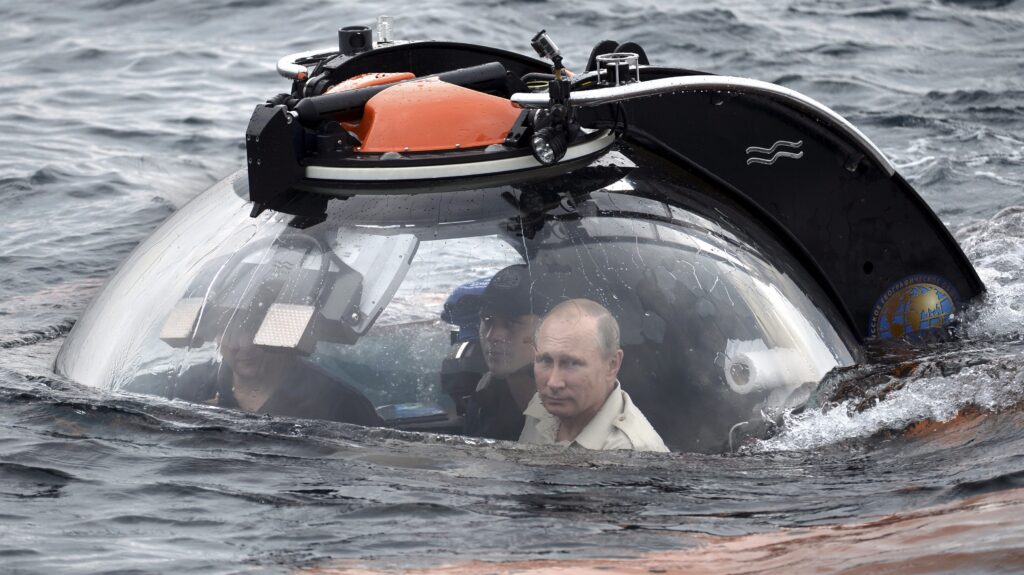 A couple weeks ago, the Shetland Islands lost all Internet service. Authorities are still investigating the cause but the the press noted that a Russian “underwater research ship” was in the area. This reminds me of the iconic “Russian fishing trawler” (typically lacking nets but bristling with antennae) that were a mainstay of 1980s spy novels.
A couple weeks ago, the Shetland Islands lost all Internet service. Authorities are still investigating the cause but the the press noted that a Russian “underwater research ship” was in the area. This reminds me of the iconic “Russian fishing trawler” (typically lacking nets but bristling with antennae) that were a mainstay of 1980s spy novels.
Could just be a coincidence or journalists whipping up sales, but consider some interesting facts:
- There are only a few hundred major undersea cables that carry Internet traffic.
- These cables handle 200TB/sec of traffic and approximately $10 trillion in daily transactions.
- 95% of international traffic is carried by these cables (the other 5% is either satellite or land lines).
- There are less than a dozen key chokepoints in the world that these cables cross.
Now consider also that Russia has invested substantially in its niche undersea warfare capabilities. As the Financial Times puts it:
…Moscow has developed several naval capabilities to work at depths that NATO considered irrelevant or uneconomic. Russia’s flotilla of quasi-military vessels includes specialist survey and support ships for unmanned submersibles and advanced bathyscaphes that can descend to even lower depths. One, the Boris Petrov scientific research ship, was tracked in the vicinity of the Shetland Isles cables when they were cut.
The “NATO considered irrelevant” is flatly wrong, as the US has had advanced undersea intelligence capabilities for decades. Operation Ivy Bells, where Soviet underwater cables were tapped, is one example. Had the war turned hot, cable-tappers could have easily turned into cable-cutters.
We’ve already seen the destruction of the Nordstream 2 pipeline, but that’s a completely different case. A Russia Gazprom engineer only needed to send a “pig” through the pipeline to blow it up. Here’s we’re talking about a different capability: sneaking up to a cable and cutting it.
But Nordstream 2 points out a fundamental aspect of this warfare: ambiguity. No one really doubts who blew up the NS2, but if a cable goes out, it’s not immediately clear what happened. Undersea cables sometimes break due to fishing trawler nets, earthquakes, or other innocent causes. Immediately pointing the victim at a state actor is hard. In the Shetland case, there was a Russian ship with the capabilitiy nearby, but what if a submarine had done the deed?
James Bond Meets Vladimir Putin
The Russian submarine AS-12 Losharik was designed to provide deep underwater intelligence capabilities and is capable of operating at depths of up to 2500m. For comparison, typical subs operate at 400-500m max, and the Titanic is sitting at about 3,800m.

As Wikipedia puts it, “The vessel has been described as a ‘spy submarine’ that could possibly be used to tap into or sever underwater telecommunications cables.” The Russian navy has found new uses for its aging Cold War submarine fleet: a Delta III sub (first launched in 1974) acts as a tender for the Losharik. The K-329 Belgorod also has a similar capability. In this way, the noisy old Russian sub can cruise the seas and no one knows when it releases its much stealthier child.
In typical Russian fashion, operational readiness of this platform has been mixed. In 2019, the Losharik suffered a fire, caused by battery substitution due to the ongoing Ukraine conflict.
However, the Russians have other options, including the Yantar. Here’s an excerpt from an excellent piece on Lawfare Blog:
The most prominent Russian spy ship is the Yantar. Classified as an “oceanographic research vessel,” the Yantar on its 2015 voyage probing a cable route to Cuba provoked some of the first reporting that Russia was targeting cables. That trip drew attention to the Yantar’s capabilities for intelligence operations. It carries advanced surveillance equipment, including a remotely operated underwater vehicle and two manned submersibles that the BBC reported can dive about 6,000 meters. For context, the average depth of the ocean floor is about 3,700 meters.
With all its advanced gear, the Yantar has been busy since it came into service in 2015. The ship deployed off a U.S. submarine base in Georgia in 2015, located the wrecks of crashed Russian fighter jets in the eastern Mediterranean in 2016 and assisted in the search for a missing Argentine submarine in 2017. The Russian navy is scheduled to complete construction on a second Yantar-class ship in 2019 and to begin building a third in 2020.
The Effects
Besides the tragedy of teenagers not getting their TikToks, cutting these cables has military consequences as well. Of course, vital communications (e.g., “launch the nukes”) are not carried on the public Internet and important military channels are carried end-to-end on military equipment.
But that doesn’t mean there aren’t consequences if the Internet goes out. Quoting Defense One:
In 2008, an accidental cable break in the Mediterranean forced the U.S. military to reduce drone operations from Balad Air Base in Iraq from hundreds of daily sorties to only tens, as communications slowed to a crawl between the drones in Iraq and the operators in the continental United States.
Sunak Warned About the Threat
New British PM Rishi Sunak wrote a paper in 2017 called Undersea Cables: Indispensable, insecure. He doesn’t pull punches:
A successful attack on the UK’s undersea cable infrastructure would be an existential threat to our security. Yet the exact locations of these cables are both isolated and publicly available – jugulars of the world economy which are a singularly attractive target for our enemies.
The good news is that the reason cables are put undersea is that it makes the difficult to target. Hiking out to some remote wilderness area where, say, an oil pipeline snakes through is much easier than finding and cutting a cable hundreds of meters below the ocean’s surface.
“Finding” is indeed part of the problem because while there are general maps, exact locations are not published. To actually cut a cable, you need to place an explosive very close to the line. While underwater explosions can be more devastating than above-ground ones, you can’t rely on the pressure wave to break the cable. It’s different than the “torpedo under a keel” scenario where the presurre will crack a hull. Here, you have a small, partially buried cable that was specifically designed to withstand massive pressures. Although there is not any public literature on the best methods of cutting cables (no chapter in the Anarchist’s Cookbook on this), it’s likely that any demolition charge needs to be placed very near or on the line.
This likely eliminates all but state actors. For now.
The Next Arms Race
Sending spies to snip wires is the elegant solution, but in this age of underwater drones, vessels like the Losharik and Yantar might be already obsolete for cable destruction operations. Yes, you need James Bond tech if you want to sneak up and tap the cable, but do you really need a multi-billion-dollar sub if destruction is the goal? Or is it cheaper, easier, and faster for a 18-year-old Russian sailor on a trawler bridge to “fly” a glorified Capsela down to the cable and press “destruct”?
Here’s another questions: if the Iranians (with little access to Western technology) have build a dollar-store drone that has anti-infrastructure capabilities in 2022, what will terrorist groups be able to do in 2050? To be clear, a drone that can (a) descend hundrds of meters under pilot control, (b) locate a submarine cable in blackness, and (c) contains sufficient engineered explosives is no small order. But who wants to bet against technology? And while a Russian spy ship operating 3 miles off New Jersey is going to have US Navy eyes on it continually, a small fishing trawler a few miles offshore may not even attract the notice of the Coast Guard.
If we turn to those playing defense, their job is much harder. You have to protect massive amounts of ocean. It’s the convoy protection problem on steroids, because you can’t just shuttle guarded supplies from point A to B, but rather have to protect a set of global “bridges” that will immediately stop working if any point along them is damaged.
Cables Aren’t Going Away
Although vulnerable, the world prefers undersea cables for two reasons.
The first is cost. Building, launching, and managing satellites is much more expensive than laying cables. Not only do you have to design and manufacture the “birds,” but you have to cart them to the equator and fire them into space, and then manage them as long as they’re up there.
Even if they were free, though, people would still prefer undersea cables due to performance. You only need to consider that microwave speeds are quoted in Gbps and landline speeds in Tbps to realize the inherent physics: physical medium is faster than wireless.
There’s also the latency issue, which can be illustated if you think of a simple triangle. Point A is New York, point B is London, and point C is a satellite. Is it faster to go from point A to point B, or from point A to point C to point B?
There is one method for global communications that can’t be interfered with by any attacker: ELF. Unfortuantely to transmit you need about 23 km (14 miles) of space and can only transmit about three bytes per minute.
Until the ansible comes (or world peace unexpectedly breaks out), we are going to be living in interesting times.























Leave a Reply